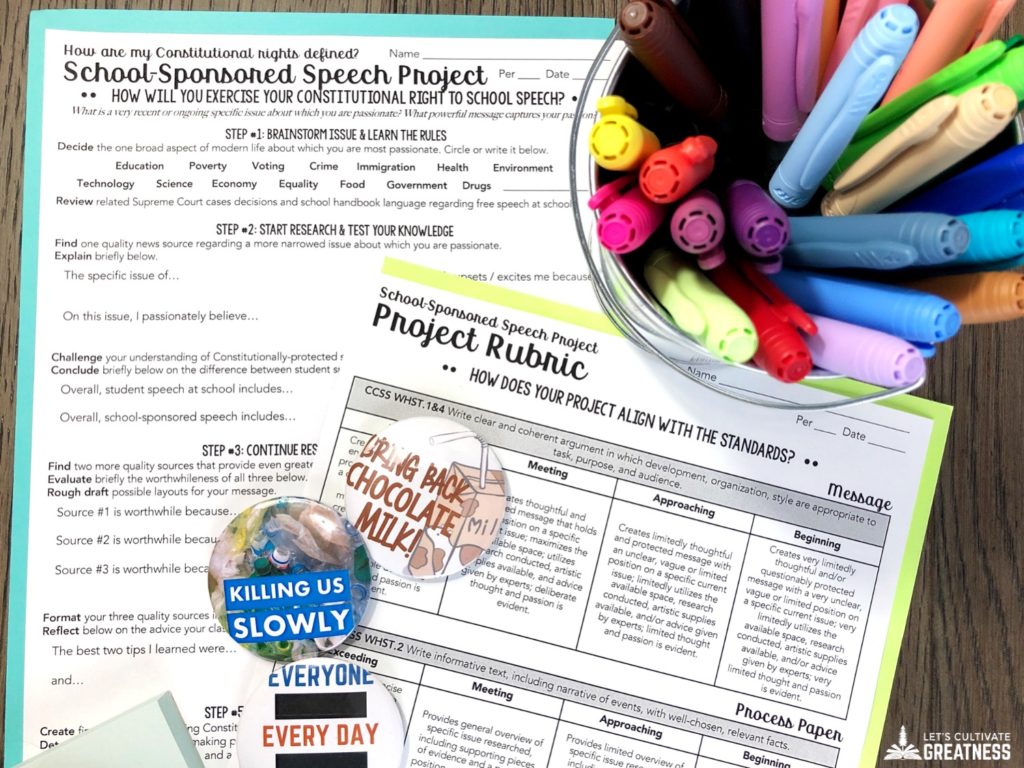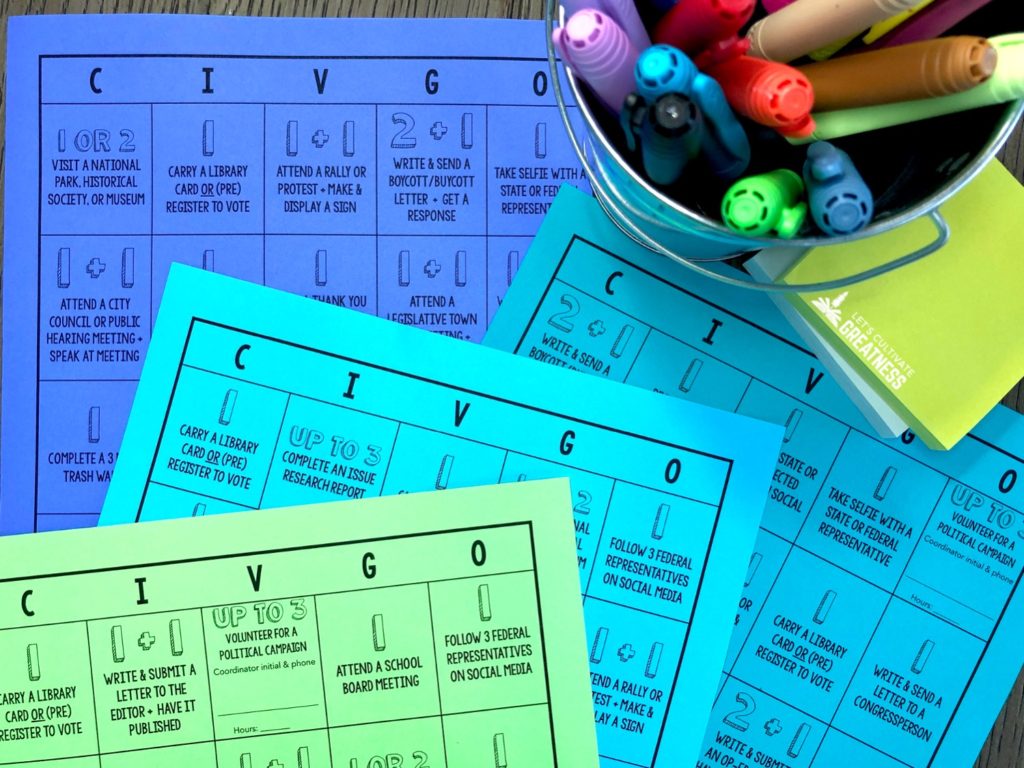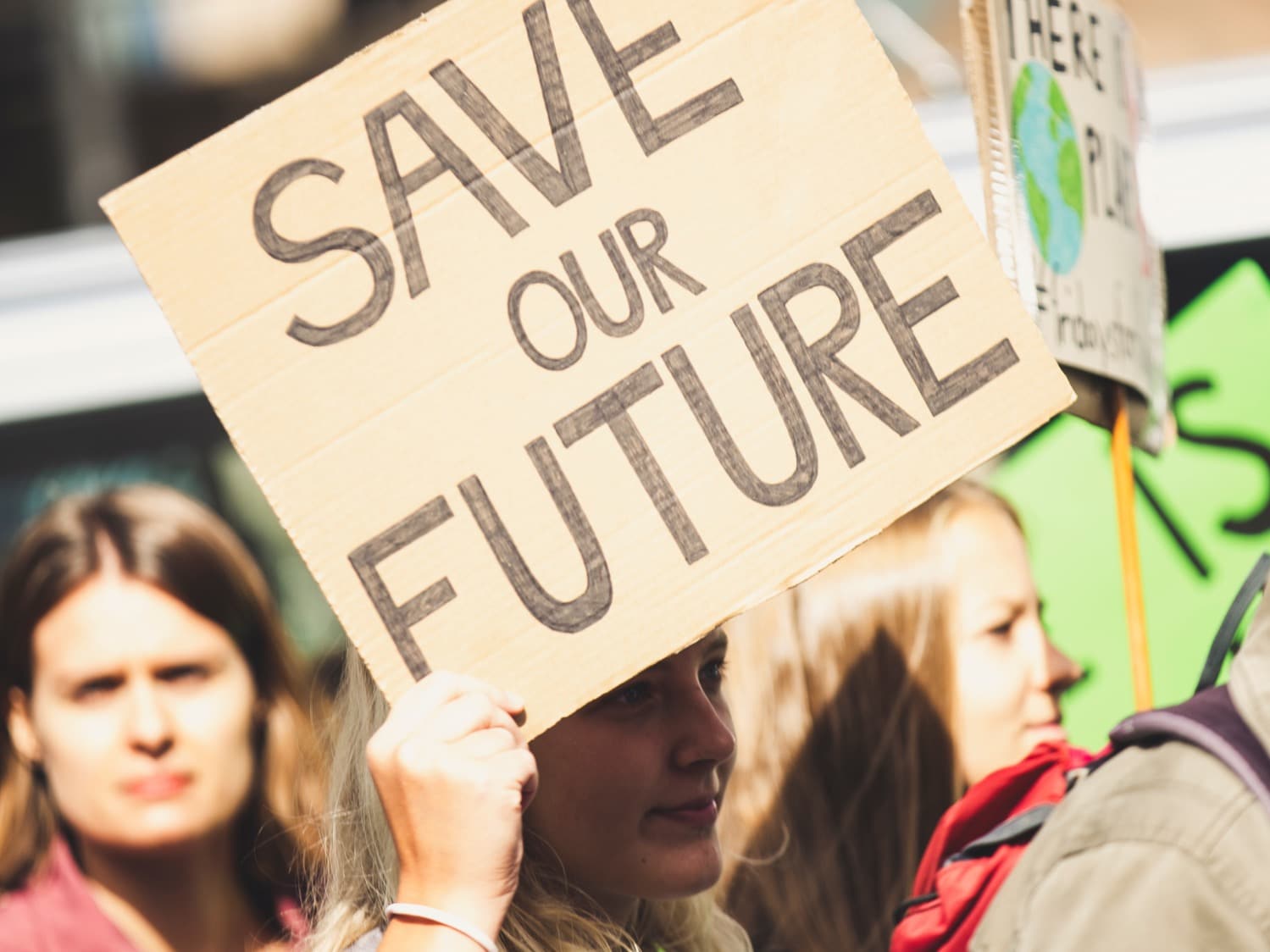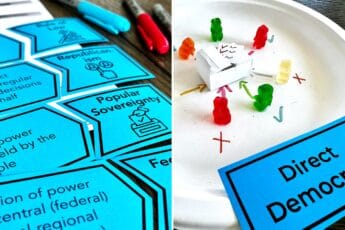You probably went into teaching social studies because you have always been a bit of a nerd for learning the real story behind the accepted narrative and somewhat politically involved as a result. That, and because you hope to create that same spark of truth-seeking activism in your students.
But daunting pacing guides and overcrowded class sizes can fester a lingering uncertainty: Did they really walk away from my class inspired and equipped to be politically active citizens?
That was me in 2016. I’ve shared before how that year had a huge impact on my teaching journey, especially seeing misinformation and divisiveness, confusion over the Electoral College, and more emotional appeals than policy debates. It was a presidential election like no other, but for me it was also a wake-up call and left behind an unyielding sense of urgency for me to reexamine my courses.
I had been feeling pretty confident I was teaching about injustices and promoting equality across my classes, but that year I took a hard look at how to be better, especially in how to include more opportunities for my students to practice using their voices for change.
That school year, I switched to a project-based format with very specifically–chosen and authentic projects. Ones that put students in the position of making history, not just reading about it.
The National Association of Social Workers describes social justice as “the view that everyone deserves equal economic, political, and social rights and opportunities.”
Looking at that definition, I would hate to think any teacher isn’t a social justice teacher. But the truth is that we all have room to grow. In 2016, I realized my students needed more than learning about the agency and efforts of oppressed people, the inherent biases drawn into our maps, or the unfairness of certain laws. They need to engage in the actions of social justice themselves.
Incorporating social justice projects across all my subjects has been a game changer for my classroom. And the good news is that you don’t have to go full PBL to begin adding meaningful projects that promote equality and social reform.
These are some of my favorite projects that inherently promote social justice, while also being practical for the classroom, meaning you can weave them into all sorts of units, contain them to just a few class periods (or less!), and do them year after year.
1. Op-ed Essays

A succinct argument with a strong personal perspective, on a current pressing issue, submitted to a community audience with hopes of influencing others—that is about the most perfect social justice classroom project there is!
Even better, a classic trait of a good editorial is including a reference to America’s founding values and/or historical events in arguing a need for change. So not only do op-ed essays require your students to demonstrate understanding of the content taught, they are generating those connections to the problems of today, not you. You up in front of the class trying to impress the relevance of the material you’re teaching is not enough and this project helps bridge that gap.
The best part of all about op-ed essays is that they are only 300-400 words, so they are very manageable to weave into your social studies curriculum in just a few class periods.
After giving feedback on my students’ essays, I encourage them to submit them to the local newspaper. Most do, but it’s important to give students the choice.Learn more about doing your own op-ed essay project.
2. Thank You Letters
This one can be done within just one or two class periods and works great in a modern history or social science class.
Challenge students to research someone still living who influenced an impactful historic, legal, economic, or social change they studied. Someone they admire for their bravery and commitment. Then teach them how to write a formal, yet heartfelt letter. This lesson in gratitude and in honoring the changemakers before us is one often overlooked when we think of social justice.
For the actual mailing, you’ll be surprised how easy it is to find a viable address for most public figures with a little Googling, and you can always ask if your school or PTA will cover the cost of stamps.
Learn more about teaching a proper thank you letter.
3. Free Speech Buttons

Pair this one with a unit that focuses on reform movements or rights: Constitutional Era, Era of Reform, 1960s, or a constitutional rights unit. Or you could use it with a current issues unit in your geography, economics, or sociology class.
I like this one because it doesn’t involve a lot of writing, but students do have to demonstrate a researched position on a specific issue about which they are passionate. And because they absolutely love wearing their finished buttons on their backpacks and jackets.
This one does require some instruction about school-appropriate speech. You’ll want to make sure they are at least moderately familiar with Tinker v. Des Moines, Bethel v. Fraser, and your school handbook. You’ll also need access to either a button maker or a laminator to make luggage-style backpack tags. Sometimes students will even opt to put their design on a t-shirt.
Learn more about creating a free speech project.
4. Business Boycott Letter
We do this social justice project during our “How patriotic is protest?” unit, but it would also work well during any sort of reform unit like the Progressive Era or Civil Rights Movement, or as part of a current issues course.
In our discussions about being an effective protester, we discuss is how posting on social media is largely ineffective. In fact, the slang term “slacktivism” is used to characterize exactly those kinds of efforts.
Through exploring past protest movements, we learn that real change comes from sustained, uncomfortable protest, as well as impact to companies’ bottom lines.
With this project, students research a company’s current practices and statements and decide if they support them or not. If they do, students write a letter of encouragement and support, pledging their intentions to remain a loyal customer. We call those “buycott” letters. If they don’t, have them pledge a personal boycott, detailing the specific changes they want to see.
When students get letters back from their company, they are the talk of the class. It is so cool to see students experience real influence like that.
Learn more about doing your own boycott letter project.
5. Political Service Challenge

If your students have any sort of community- or political-service requirement, this is a no-brainer way to support and engrain social justice into your curriculum.
I created a BINGO-style choice board of 25 different civic engagement and social justice actions, allotted each a certain number of hours or points that students need to complete, and then they choose how to make their voices heard.
Everything from attending school board meetings to following elected officials on social media are listed. Some easier, some harder, some within students’ comfort zone, some outside. Best of all, if a student is passionate about a certain issue, then they can complete several different actions in their efforts to voice their position and advocate for change, like call an elected official, attend a city council meeting, and write a letter to the editor.
Learn more about doing your own political service challenge.
I hope these doable ideas help you bring real-life social justice action into your classroom!
You may also find my blog post, How to Be an Antiracist History Teacher, useful for more actionable strategies to help ensure your course content embodies the social justice lens.
Feature image photo credit: Markus Spiske









